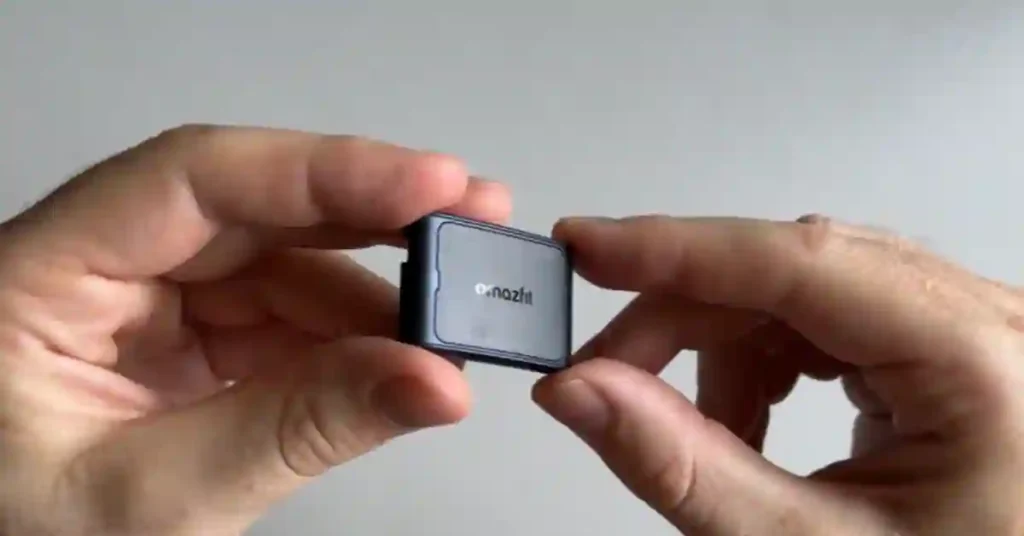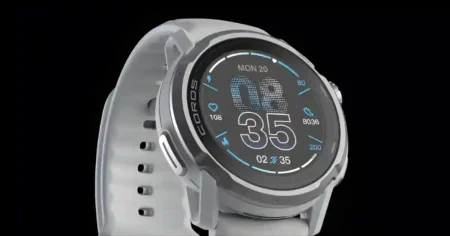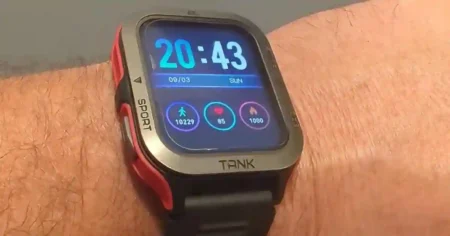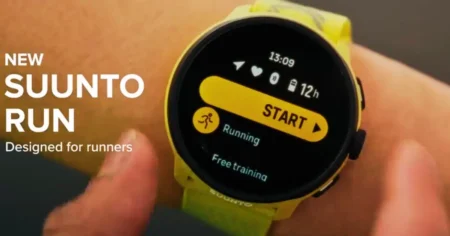For 30 days, I looked slightly ridiculous walking around with three straps on one arm. All day, all night, every workout, at my desk, and while I slept, I wore the WHOOP (company) 5.0, the Polar Loop / 360 band, and the Amazfit Helio Strap together to see which one I would actually keep using.
All three are screen‑free bands. No watch face, no notifications, just data and insights about your fitness, recovery, and Sleep.
Until recently, WHOOP (company) pretty much owned this part of wearable technology, but in 2025, Amazfit and Polar stepped in with their own options.
Over this test, I compared:
- Price and subscription
- Battery life
- App experience
- Auto workout tracking and accuracy
- Sleep tracking
- Core metrics like steps, calories, and heart rate variability
Everything here is based on my own testing. I paid for the devices and used them in my normal training, mostly running and strength work.
Why Test Three Screen‑Free Fitness Trackers At Once?
For four weeks, I wore all three bands on my upper arm. Each fitness tracker sat on the bicep, just above the elbow.
I only took them off to shower or charge them. That way, they all had the same chance to track my health, Heart rate, Sleep, and activity.
Here is what I used:
- WHOOP (company) 5.0 on a consumer one‑month trial (on the Peak plan)
- Polar Loop 360, which is the business version of the Polar Loop band
- Amazfit Helio Strap, which I bought at launch in June 2025
I wanted to answer a simple question: if you care about your training, recovery, and daily fitness, which of these bands actually gives the best overall experience over 30 days of real use?
Instead of staring at an Apple Watch or another smartwatch screen all day, these straps sit quietly on your arm and send everything to your phone.
If you like the idea of tracking your Heart, Heart rate, and Sleep without yet another glowing screen, these devices might help.
I will walk through each category, then share which band I decided to stick with long-term.
Cost Breakdown: Subscription vs One‑Time Buy
Let’s start with the price, because these three bands use very different models.
What Each Device Costs
| Device | Upfront Cost | Ongoing Cost | Subscription Required? |
| WHOOP (company) 5.0 | Band included | $179 / $199 / $299 per year | Yes (required for data) |
| Polar Loop Band (360) | $199.99 | None | No |
| Amazfit Helio Strap | $99.00 | None (optional Aura add-on for Sleep) | No |
The WHOOP (company) model is simple but expensive. In the UK, you do not pay for the hardware up front.
You pay for a yearly membership, and the strap comes included. The catch is that the band is useless without an active subscription. No sub, no data.
WHOOP Membership Tiers

WHOOP currently has three annual plans:
- One ($179/year): Core features like recovery, Sleep tracking, strain, activity tracking, VO2 max, and heart rate zones.
- Peak ($199/year): Adds Whoop Age, stress tracking, and health monitoring for five vitals.
- Life ($299/year): Adds ECG heart screening and irregular heart rhythm notifications.
During my test, I used the Peak plan so I could try everything. After 21 days, I unlocked Whoop Age and the health monitoring views.
They were nice to look at, but I would struggle to justify paying £60 more each year just for those.
Want to see how WHOOP 5.0 actually performs? Read our full WHOOP 5.0 Review for insights, upgrades, and value.
Polar and Amazfit: Pay Once, Use Forever
On the other side, Polar and Amazfit use a classic one‑time payment.
- The Polar Loop band costs $199, no subscription. Everything runs through the Polar Flow app.
- The Amazfit Helio Strap costs $99, so it is the cheapest by far. You get full access to the Zepp app. There is an optional Aura subscription for deeper Sleep tracking and Sleep sounds, but I did not feel a strong need for it.
If you hate ongoing fees, the Polar and Amazfit options are more appealing. If you do not mind a subscription business model and want the most polished ecosystem, WHOOP is in play.
If you want to check current prices, these are the same models I used:
Battery Life: Who Lasted Longest?
Over 30 days, I fully drained and recharged each device several times, then tracked how long they lasted and how long they took to charge.
Battery Life and Charging Time
| Device | Average Battery Life | Full Charge Time | Remove to Charge? |
| WHOOP (company) 5.0 | 12 days 6 hours | 2 hours 20 min | No, on-body pack |
| Amazfit Helio Strap | 10 days 12 hours | 1 hour 40 min | Yes |
| Polar Loop Band (360) | 5 days 18 hours | 55 min | Yes |
WHOOP (company) came out on top. Around 12 days on a charge is strong, and the unique part is the charging pack that slides onto the band. You do not have to take the strap off to charge it. If you hate gaps in your Data, this feels great.
The Amazfit Helio Strap finished second. Around ten and a half days on a charge is still very good. You do need to remove it to charge, but the gap is short enough that it did not annoy me.
Polar was the clear loser. Even accounting for the consumer Loop having about a 15% bigger battery than my 360 version, you might get an extra day at best.
So maybe 6 to 7 days instead of just under 6, but still well below the others. The upside is that it charges in under an hour.
If battery life matters to you and you want as little fuss as possible, WHOOP takes the win here, with Amazfit close enough that it still feels practical.
App Experience: Where WHOOP Shines and Polar Struggles
The strap on your arm is only half the story. The app experience is where your Information turns into something that can actually guide your training and recovery.
WHOOP App: Polished, Clear, and Easy to Use
The WHOOP (company) app is built around three simple pillars:
- Sleep score
- Recovery score
- Strain score
Everything flows from those three ideas. The layout is clean, the fonts are readable, and you do not have to dig through endless menus to find your Heart rate, recovery, or last workout.
A few highlights:
- The main screen shows daily Sleep, recovery, and strain at a glance.
- You can customise the dashboard to add things like steps, calories, and VO2 max.
- Each evening, the app gives suggestions to help you maximise recovery for the next day, such as bedtime targets or habits.
On the Peak plan, after 21 days, I also unlocked:
- Whoop Age, which compares your internal age to your actual age.
- A health monitor view that shows if five vitals are in or out of range.
Nice extras, but not must‑haves for me.
WHOOP also has some handy extra features:
- A smart vibrating alarm that can wake you at a set time or when you are optimally recovered within a window.
- Heart rate broadcasting, so you can use the strap as an external sensor with other devices or apps, similar to how you might pair AirPods or AirPods Pro to your phone.
- A downloadable PDF report that summarises about six months of Data, which you could keep for yourself or share with a doctor or coach.
Overall, the WHOOP app feels like something from Apple Inc. in the sense that it is polished, consistent, and simple to understand.
If you come from an Apple Watch background, it will feel familiar in quality even though it serves a different purpose.
Polar Flow App: Powerful Data, Poor Experience
Polar has been around since 1977, so they have a long history in fitness tech. That is why the Polar Flow app is such a letdown.
The Loop band uses the Diary view in Flow. By default, it lists everything in time order, which makes your day look like a long vertical log. You can change the ordering, but it still feels clunky.
On the surface, you see:
- Highest and lowest Heart rate for the day
- Cardio load status
- Activity goal percentage
- Nightly recharge
- Boost from Sleep
- Sleep score, sleep time, and lowest heart rate during Sleep
The problem is what happens when you want more detail. For example, finding heart rate variability (HRV) is a maze. I had to:
- Open Nightly Recharge
- Then tap ANS Charge
- Then interpret HRV there
The Information is usually somewhere in the app, but the structure is not friendly. Some metrics use scores, others use colored notches, and others are text statements.
There is little explanation of terms like ANS (autonomic nervous system), and no real guidance on what numbers should mean to your fitness.
Graphs use doughnut charts and cold line graphs that feel dated. Nothing is broken, but nothing feels inviting either.
On top of that, the Loop band lacks basic features like:
- No vibrating alarm
- No option to broadcast Heart rate to other devices
For a company this experienced, the overall experience feels half‑baked.
They have said they plan to improve the software, but as Marquez Brownlee often says, never buy tech based on promised updates.
Amazfit Zepp App: A Strong WHOOP‑Style Alternative

It is very clear that Amazfit took inspiration from WHOOP for its Zepp app, and that is not a bad thing.
The app is split into four main sections:
- Overview: A home screen view of key stats like steps, calories, stress, and Heart health.
- Biocharge: Amazfit’s version of recovery. It tells you how ready your body is to train.
- Sleep: Detailed Sleep tracking with score, duration, stages, respiratory rate, regularity, and more.
- Exertion: Similar to strain. It shows how active you have been, your daily target, how fit and fatigued you are, and which activities contributed.
You can also customise which metrics appear at the top, just like in WHOOP’s dashboard. The fonts, colours, and layout are clear and modern. I never felt lost in the menus.
There are a few rough edges. In Exertion, once you hit 100% of your daily target, the score stays at 100% even if you go far beyond it. WHOOP’s strain system feels a bit more thought-through in that area.
Still, as a daily fitness tracker app, Zepp is very good. If WHOOP is a solid 9 out of 10 for app experience, I would put Amazfit at a close 8.
App Experience Summary
If I rank the apps:
- WHOOP (company)
- Amazfit Zepp
- Polar Flow
WHOOP is the best overall for clarity and guidance. Amazfit is almost as good and gets most things right. Polar has the Data, but not the user experience.
Automatic Workout Tracking: How Accurate Were They?
To test auto workout tracking, I paired all three bands against a reference setup:
- A Polar Verity Sense arm strap for Heart rate
- Linked to a Garmin Epix Pro Gen 2 watch
- All Data synced to Strava
I used the Garmin to start and stop every workout manually so I had an accurate reference for time and effort. Then I compared each strap:
- For a time, the closest to the reference got 3 points, the second got 2, and the last got 1. If it missed a session, it got 0.
- For Heart rate and effort, I compared Strava Relative Effort scores in the same way.
Across 30 days, I did 13 runs and seven strength or conditioning sessions.
Running Workouts
On the 13 runs, WHOOP dominated for time accuracy. It was closest to the true duration in 10 out of 13 runs.
Polar was the most frustrating:
- One 20 km long run was not recorded at all.
- Two runs were split into two or three separate activities, and Polar Flow gives you no way to merge them.
In terms of Strava Relative Effort for runs:
- WHOOP scored 31 points
- Amazfit scored 29
- Polar scored 23
So both WHOOP and Amazfit tracked running effort reasonably well, with WHOOP slightly ahead.
Strength and Weight Training
All three devices struggled a bit more with strength and conditioning for time. That is not a surprise, since sets and rests are harder to detect.
For timing across seven gym sessions:
- Amazfit came out on top
- WHOOP was second
- Polar was third and once again failed to log one session at all
Looking at Strava Relative Effort for these sessions:
- Amazfit scored 17
- WHOOP scored 16
- Polar scored 10
Combined Effort Scores
If you combine running and strength, the Relative Effort scores:
- WHOOP total: 47
- Amazfit total: 46
- Polar total: 33
Time detection is never perfect with auto workout tracking, but WHOOP impressed me with how often it got close for runs.
Across both types of training, WHOOP and Amazfit delivered respectable accuracy. Polar lagged and missed too many sessions.
Curious how it compares to WHOOP? Don’t miss our Amazfit Helio Strap Review: Subscription-Free WHOOP Alternative?
Sleep and Core Metrics: Where They Agreed and Where They Differed
Sleep Scores and Duration
Across the test period, average sleep scores were closer than I expected:
- WHOOP: 87
- Polar: 83
- Amazfit: 81
Sleep duration was similar between Polar and Amazfit, with only about a four‑minute difference on average.
WHOOP reported more total sleep time. This was mostly because of one night when I thought I stayed asleep until 8:56 a.m., even though I woke up around 7 a.m. That one long night pulled the average up.
There was also one night where Polar failed to record Sleep at all.
Sleep Stages Compared to a Reference
To look at sleep stages, I again used the Polar Verity Sense, but this time paired to the Sleep2 app (formerly NUR). This combination has had good independent reviews for accuracy.
Across 10 nights:
- WHOOP was closest for REM sleep.
- Polar was closest for deep Sleep, light Sleep, and awake detection.
- Amazfit struggled most with recognising when I was awake during the night.
So if your main focus is detailed sleep stage data, this is one area where the Polar band actually performed better than the other two.
Steps, Calories, and HRV Averages
Here is how the three bands compared for core metrics over the 30 days.
In simple terms:
| Metric | WHOOP | Polar | Amazfit |
|---|---|---|---|
| Average daily steps | 8,790 | 9,963 | 9,528 |
| Steps vs 3-device average | About 7% lower | About 6% higher | About 1% higher |
| Average daily calories | 2,352 | 3,140 | 2,719 |
| Calories vs 3-device average | About 14% lower | About 14% higher | About 0.5% lower |
| Average HRV (ms) | 25.7 | 27.1 | 30.6 |
| HRV vs 3-device average | About 8% lower | About 3% lower | About 10% higher |
- WHOOP reported the weakest steps, calories, and HRV.
- Polar reported the highest steps and calories, and a middle HRV.
- Amazfit sat in the middle for steps and calories and gave the highest HRV.
The exact numbers will not match across platforms, and you should not compare raw HRV between ecosystems.
What matters more is the trend inside one system over time. But if you are wondering why one app says you burned 2,300 calories and another says 3,100, this is why.
Final Verdict: Which Strap Am I Keeping?
After 30 days of wearing all three bands around the clock, here is where I landed.
Where Polar Fell Short
Polar was the biggest disappointment for me:
- The app felt dated, confusing, and cold.
- It missed multiple workout sessions and split others with no way to merge them.
- It has no alarm and cannot act as an external heart rate sensor.
- Battery life was the shortest by a long way.
The underlying Information and Data quality seem decent in some areas, like sleep stages. Still, the overall package is hard to recommend right now.
Where WHOOP Stands Out
WHOOP is the most enjoyable to use overall:
- The app experience is excellent.
- The fitness tracker metrics are clear and actionable.
- Battery life is strong, with on‑body charging.
- Auto workout tracking for runs worked very well.
- The community around WHOOP is also strong, which many people enjoy.
The only real problem is cost. I would probably be fine with the entry-level One plan at £169 per year, but to pay that every year, I would want WHOOP to crush the competition in every single area. It does not quite do that.
Why I Chose the Amazfit Helio Strap
This is where the Amazfit Helio Strap becomes so appealing.
- The experience is not far behind WHOOP.
- The Zepp app is clean and easy to use.
- Battery life is solid at around ten days.
- Auto workout tracking and effort scores were only slightly behind WHOOP.
- Price is a simple one‑off £100 with no required subscription.
For me, that balance of fitness insights, comfort, and cost makes Amazfit the strap I am sticking with. WHOOP might offer the single best ecosystem, but not by a big enough margin to justify a yearly subscription compared to a one‑time payment.
If you want the most polished premium option and you are happy to keep an account active with a subscription, WHOOP is a strong pick.
If you wish to do something much cheaper that still gives you rich Sleep tracking, recovery, and training Data, the Amazfit Helio Strap is hard to beat.
Thanks for reading. If this Information about screen‑free wearable technology helped you, feel free to share it with a friend who is comparing bands or thinking about taking their fitness beyond a basic Apple Watch.
The right tool on your arm can quietly support better habits, better training, and better health over the next 30 days and beyond.
You May Also Like
- WHOOP 5.0 Review: New Features, Pricing, & Health Insights
- Amazfit Helio Strap Review: Subscription-Free WHOOP Alternative?
- 2025’s Best Fitness Trackers under $100 : Accuracy, Battery Life & Value Compared
- Best Fitbit for Seniors in 2025: Unlocking Wellness with Comprehensive Fitness Trackers









